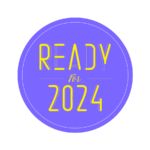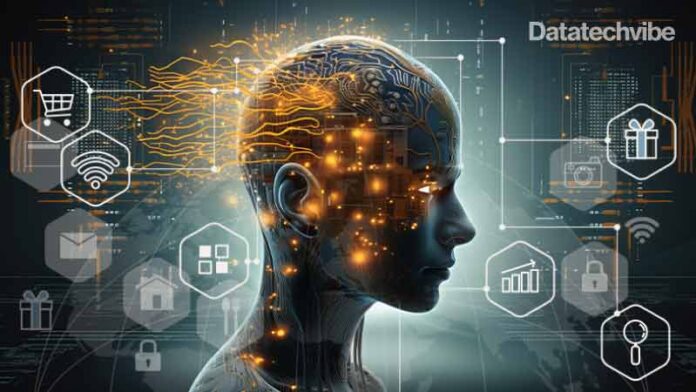Tech news about inventions and discoveries around Open AI, GPT-4 and generative AI continued to grab headlines all year.
 This year witnessed inspiring innovations, ranging from the introduction of cutting-edge technologies to AI integrations and regulations. Tech giants also made notable acquisitions, collectively shaping an ecosystem filled with possibilities for both forward-thinking leaders and their end customers.
This year witnessed inspiring innovations, ranging from the introduction of cutting-edge technologies to AI integrations and regulations. Tech giants also made notable acquisitions, collectively shaping an ecosystem filled with possibilities for both forward-thinking leaders and their end customers.
Inventions and breakthroughs around Open AI, GPT-4 and generative AI consistently garnered attention in 2023. The EU AI Act added a new dimension to the landscape. While some welcomed this policy, others viewed it as a potential threat, sparking diverse opinions and discussions.
For instance, Ian Liddicoat, Chief Technology Officer and Head of Data Science at Adludio, stated, “Tech companies will resist this if it is seen to stifle innovation. Suppose the regulations restrict or limit the application of foundational models. In that case, the EU will push the ability to manage such regulation into the hands of the US, where many of the largest tech companies interested in AI are domiciled.”
As we bid adieu to 2023, here are the top 25 tech news announcements that will pave way to the bigger tech game in 2024.
Collaborations and Tech Acquisitions
1. Meta Acquired Smart Lensmaker Luxexcel
In a world where 3D technology is immensely popular, Meta acquired Lensmaker Luxexcel towards its goal of introducing AR glasses. The first version of Meta’s AR glasses was only available to developers.
2. Kyndryl Collaborated with Microsoft
After surveying the different stages of sustainability maturity by various companies, Kyndryl collaborated with Microsoft towards its sustainability goals. The vision of the partnership was to introduce more sophisticated AI tools, contributing to a sustainable future.
3.SAP Embedded IBM Watson’s AI Capabilities
To achieve the milestone of offering businesses enhanced user experience and decision-making capabilities, SAP embedded IBM Watson’s AI capabilities. This integration helps users boost their productivity with natural language capabilities and predictive insights.
4. Digital DEWA Partnered with Nedaa
Late October, Digital DEWA and Nedaa signed an MoU to boost IoT and critical communications in the region. The partnership focussed on pioneering an era of digital service whilst benchmarks for safety, innovation, and reliability.
Integrations for Tech Evolution
5. Malwarebytes Launched WorldBytes
Malwarebytes always believed that cybersecurity can be effective yet simple and intuitive for users, and thus launched WorldBytes. Powered by next-level AI technology, it allows users to get real-time threat assessments of potential cyber risks.
6. Meta and Microsoft Introduced Next-Gen Llama
While realising an open approach to be ethical in AI model development, Meta and Microsoft launched the next-generation Llama. This integration open-sourced the next version of Llama 2, making it free for research and commercial use.
7. Elon Musk Integrated AI with its AI-powered Company
Elon Musk challenged OpenAI in the artificial intelligence startup space with its AI-powered company, X.AI Corp. The wider plan of the AI startup is to create an everything app under the brand “X.”
8. Snapchat Integrated ML into its AR Lens
As an initiative to revolutionise the interactive experiences of the deaf community, Snapchat launched its ML-powered AR lens. The lens utilised Machine Learning technology, enabling the camera to accurately identify and interpret 28 distinct hand gestures from the Arabic Alphabet.
9. Built Robotics Launched Piling Robot
Just to simplify the complex process of piling in utility-scale solar projects, Built Robotics launched RPD 35. This autonomous piling robot accelerated the process of piling, bringing the nation closer to net zero energy.
10. Open AI Integrated its Image Generator, DALL·E 3
Keeping up with the pace of its innovation integrations, Open AI introduced its image Generator tool, DALL·E 3. This latest update enables users to command ChatGPT to tweak the undesired image generated by DALL·E 3.
Explore what’s trendy around tech, subscribe to our newsletter!
Updates and Launches Around AI
10. Google Announced Bard AI
Giving direct competition to Open AI, Google announced Bard AI in February. With its Bard AI launch, the company’s ultimate aim was to simplify complex topics in an explanatory way. The product is still developing and Google’s R&D team is constantly adding new features to it.
12. Arabic Language Integrated in Google Bard
Fueling the buzz around Open AI integrations, Google Bard added Arabic. Powered by Google’s latest language model ‘PaLM2′ which has a multilingual understanding of information, Bard understands questions in over 16 Arabic dialects.
13. Google Unveiled Gemini Pro
Early December, Google integrated Gemini Pro within its chatbot Bard, enabling human-like interactions and outperforming other AI models. Google claimed it to be one of the first AI-powered multi-modal LLM, making more natural and human-like interactions.
14. NeuralSpace Launched Authentic AI Voices
Marking a significant leap in voice technology, NeuralSpace launched a transformative voice technology feature within its VoiceAI platform. This innovation offers accurate transcription, speech analytics, and authentic synthetic voices in Arabic, Hindi and English.
15. Google Cloud Launched AI-powered Anti-money Laundering Product
Money laundering has always been a complex problem with a growing global impact. Thus, Google Cloud launched its AI-powered Anti-money laundering product to troubleshoot this issue.
16. Snapchat Debuted My AI
In March, Snapchat launched ‘My AI’ bot for its premium subscribers using Snapchat Plus. The idea behind the launch of My AI was to have an interactive session with AI in addition to the way people talk to their family and friends.
17. ChatGPT Launched Boom in AI-written e-books
Being a published author for non-writers is like achieving a castle, and to make it a reality, ChatGPT launched Boom. This AI software enables users to generate blocks of text from simple prompts and make their books available for sale in online stores.
Also Read: Impact of Technology and Digital Skills on Employees
Generative AI Evolution
18. Google Assistant Incorporated Generative AI in Bard
Introducing an innovative perspective on making conversations with artificial intelligence more natural, intuitive, and useful, Google launched a personal assistant. This Assistant with Bard helps users with various tasks, such as planning trips, finding emails, creating lists, or writing social posts.
19. ServiceNow Expanded its Gen AI Capabilities
ServiceNow integrated generative AI capabilities, case summarisation and text-to-code to drive speed, productivity, and value for customers. Powered by proprietary ServiceNow large language models (LLMs), both capabilities were purpose-built for the ServiceNow platform.
20. Roblox Integrated Gen AI into its Gaming Universe
Roblox integrated a generative AI-powered tool into its gaming universe, accelerating the process of building and altering in-game objects for its users. This technology was an essential step towards the company’s vision to introduce code-writing ability, making digital worlds even more customisable.
21. Databricks Integrated Gen AI Capabilities
Databricks acquired a generative AI vendor, MosaicML, to integrate generative AI capabilities into its existing solutions. It enabled the vendor to help users build and train language models specific to their needs using their data.
AI Regulations and Safety Guidelines
22. UK and US Developed Global Guidelines for AI Security
Late November, UK’s National Cyber Security Centre (NCSC), a part of GCHQ, and the US’s Cybersecurity and Infrastructure Security Agency (CISA) developed global guidelines for AI security. These guidelines were developed in response to the posing AI threats, helping developers ensure that cyber security is an essential precondition of AI system safety.
23. Meta and IBM Launched AI Alliance
With the ever-growing evolution of AI development and the risks associated with it, Meta and IBM launched a coalition of over 50 artificial intelligence companies and research institutions. The motive behind the initiative was to focus on areas, such as AI regulation and safety, hardware integrations and developments, etc.
24. EU AI Act Was Introduced
The EU AI Act was introduced, further impacting the utilisation of specific AI tools by enterprise businesses, especially the ones employed in decision-making processes. The Act established obligations for AI models based on their potential risks and level of impact.
25. UK, US, EU and China Signed Declaration of AI’s Catastrophic Danger
With the development of artificial intelligence posing a potentially catastrophic risk to humanity, twenty-eight governments, including the UK, US, EU, Australia and China signed the Bletchley Declaration. The countries agreed to work together on AI safety research under this declaration.









